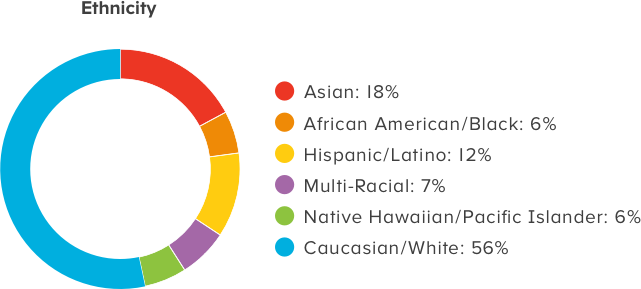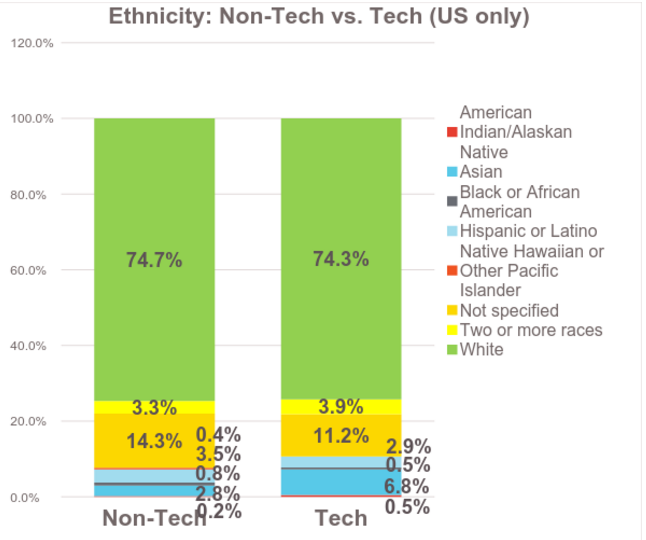
Articles
Editor’s Picks
Racial Diversity in EdTech: Little Data Available and A Lot of Work Ahead
By Cait Etherington
May 11, 2018
It is a widely known fact that in tech, the vast majority of employees in tech and leadership roles are still White and male. An April 2018 article posted on Recode reported that at Microsoft, Intel, Twitter, Facebook, Pinterest and Google, Black employees across genders represent less than 5% of the workforce and Latinx employees represent less than 10% of the workforce. In leadership and tech roles, the numbers are even more dismal. At Google, for example, Black and Latinx employees represent only 2% of the leadership team and only 1 and 3% of tech roles respectively. But does racial diversity in edtech reflect the numbers in the tech sector at large?
Few Edtech Companies Able or Willing to Share Stats on Racial Diversity
To explore the question of racial diversity in edtech, eLearning Inside News reached out to nine of the nation’s largest edtech companies to investigate further. In contrast to our earlier series on gender in edtech, however, obtaining information about the racial composition of the same companies’ workforces proved far more challenging. In fact, several of the companies who were able to share their stats on gender just a month earlier, either failed to return our request for information or let us know that they were unable to share information on racial diversity in their workforce at this time.
Specifically, we reached out to Coursera, Udacity, Age of Learning, General Assembly, Duolingo, Instructure, Blackboard, HotChalk, and Knewton. In the end, we received responses from Coursera, Age of Learning, and General Assembly. Coursera was unable to provide any data at this time. General Assembly is currently gathering data on the subject. Age of Learning responded and shared a public link with data on the composition of their workforce and a statement about their current efforts. Among the companies that did not respond, Duolingo and Instructure already had some data about the composition of their respective workforces posted online, but Duolingo’s data only offers information about gender and geographic location. Below is a summary of what we did discover about racial diversity in edtech based on the two companies that currently share public information on racial diversity.
Edtech Companies With Public Data On Racial Diversity
Age of Learning
When contacted, a representative from Age of Learning emphasized, “We are committed to promoting and preserving a culture of diversity and inclusion in the workplace, as reflected in our Diversity and Inclusion Policy. Our team is our most valuable asset, and we recognize that our individual differences and life experiences drive not only our culture but also the quality of our work.” To date, their shared data on diversity reveals that while a majority of their overall workforce is White, minorities comprise 44% of their workforce with African American/Black employees accounting for 6% of the workforce and Hispanic/Latino employees accounting for 12% of the workforce.

Infograph care of Age of Learning.
Instructure
Utah-based Instructure is not located in the most diverse state in the country, and their diversity stats appear to reflect this reality. Nevertheless, the company is aware of their racial diversity in edtech problem. They are also one of the few edtech companies to post their diversity numbers on their website. As the infographic below clearly shows, Instructure has its work cut out for it. As of 2017, only .5% of its tech employees identified as Black and only 2.9% as Hispanic or Latino.

Uncovering Racial Diversity in Edtech
If anything, our initial investigation on racial diversity in edtech revealed that, compared to gender, fewer edtech companies have yet made notable progress on racial diversity. Most notably, at least among the companies we contacted, few companies had current data on racial diversity in their workforce that they were able or willing to share. While one certainly can’t draw any sweeping conclusion from this small survey, it does seem to confirm Black Girls Code founder Kimberly Bryant’s observations about gender versus racial diversity in tech. In a 2016 interview with EdSurge, Bryant noted, “I think there’s still some hesitation in looking at diversity more broadly.”
Given recent revelations about bias in algorithms, however, there may be an especially pressing reason to tackle racial diversity in edtech. The bottom line is that building tech platforms, including those connected to education, is a process where bias can enter at any level. Diversifying the edtech workforce, then, may also play a critical role in ensuring that tomorrow’s edtech tools and platforms reflect and serve the diversity of the broader education system.









[…] Math Drill Contests: All You Need to Know – eLearningInside News eLearningInside News […]